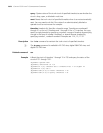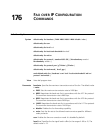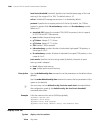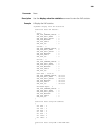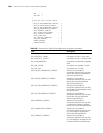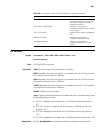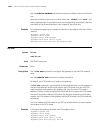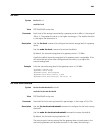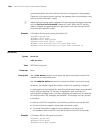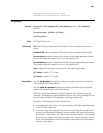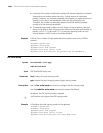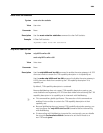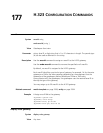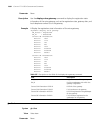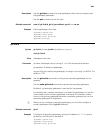
2686 CHAPTER 176: FAX OVER IP CONFIGURATION COMMANDS
performed between two facsimile terminals and is transparent to the gateways.
Therefore, for the point-to-point training, the gateway does not participate in rate
training and the threshold is invalid.
n
When the local training mode is adopted, the local training threshold configured
with the fax local-train threshold command is valid. When the PPP training
mode is adopted, the gateway does not participate in the rate training and the
local training threshold is invalid.
Example # Configure the fax local training threshold to 20.
<Sysname> system-view
[Sysname] voice-setup
[Sysname-voice] dial-program
[Sysname-voice-dial] entity 10 pots
[Sysname-voice-dial-entity10] fax train-mode local
[Sysname-voice-dial-entity10] fax local-train threshold 20
fax nsf-on
Syntax fax nsf-on
undo fax nsf-on
View POTS/VoIP entity view
Parameter None
Description Use the
fax nsf-on common to configure the signal transmission mode of fax
capability as a nonstandard mode.
Use the
undo fax nsf-on command to restore the default transmission mode.
By default, the standard signal transmission mode of fax capability is adopted.
In some cases such as encrypted fax, both facsimile terminals adopt a nonstandard
faculty (NSF) to negotiate. At the start of negotiation, both terminals first
exchange NSF message frames, and then negotiate the subsequent fax capability
for communication. NSF messages are standard T.30 messages and carry private
information.
In order to use NSF for negotiation, the following conditions must be satisfied:
■ Fax terminals must support nonstandard transmission mode.
■ The signal transmission mode of the fax capability must be set to a
nonstandard mode in the POTS and VoIP entities for both the fax terminals.
Example # Configure NSF for fax signal transmission.
<Sysname> system-view
[Sysname] voice-setup
[Sysname-voice] dial-program



